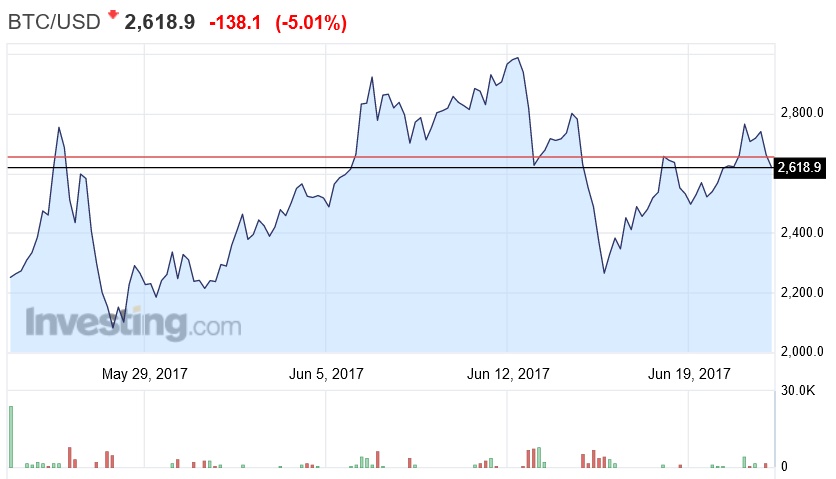The price of Bitcoin remains on a rollercoaster as investors and developers continue to battle over its future.
The cryptocurrency crept above $US3,000 a little more than a week ago, before crashing to almost $US2,000. Since the start of this week it’s been on a steady climb back towards $US3,000. This chart shows the recent fluctuations:
But a report in the Wall Street Journal (WSJ) suggests that tensions still remain in Bitcoin community. While its price climbs, the eventual path that Bitcoin follows is still subject to a significant degree of uncertainty.
The rift centres around what Bitcoin is for and how it should be used. In one camp, users want Bitcoin to remain as a finite commodity similar to gold.
Opponents want the speed and size of Bitcoin transactions to be rapidly sped up. In effect, they want Bitcoin to function to a similar fashion to a highly liquid currency like the US dollar.
The cryptocurrency was established with a limited supply of 21 million Bitcoins, of which around 14 million have been mined. That shortage of supply could go some way to explaining the dramatic increase in prices this year.
The blockchain network that Bitcoin trades on provides a historical record of all Bitcoin transactions. All users can see the blockchain activity, but the system provides a high degree of protection for people’s individual identity.
The Wall Street Journal provided a brief summary of how the activity on the blockchain currently works. Bitcoin transactions are packaged into blocks by companies that specialise in processing the trades.
However, the size of those transactions is currently capped. That means a processing speed of approximately just seven transactions per second, compared to a large network like Visa which can process hundreds of thousands in the same time frame.
With Bitcoin’s popularity exploding, the reduced capacity has led to delays and higher transaction fees.
Not surprisingly, some market participants want to increase the volume of transactions. But they’re facing resistance from those who want to maintain the status quo.
That resistance stems partly from a desire to protect their investment, but they also want to maintain the original Bitcoin platform without the intrusion of big business.
Previous attempts at compromise have failed, and the possibility of a split in the currency is back on the table.
The dispute has led a growing number of users to sell out of Bitcoin and purchase Ethereum instead. Prices for Ethereum (the world’s second biggest cryptocurrency) have also skyrocketed this year.
Ethereum, which experienced a flash crash overnight, was worth $US190 at the end of May and now trades at around $US300, after starting the year at a price of $US8.15.
According to the WSJ, all parties are open to boosting transaction capacity for Bitcoin but there are strong disagreements about how to actually go about it.
Businesses would prefer to raise the transaction limit for all Bitcoins, whereas their opponents (led by developers) want to set up a secondary network with faster processing speeds.
The net effect is that the outlook for Bitcoin remains increasingly cloudy as the market continues to develop and mature.

